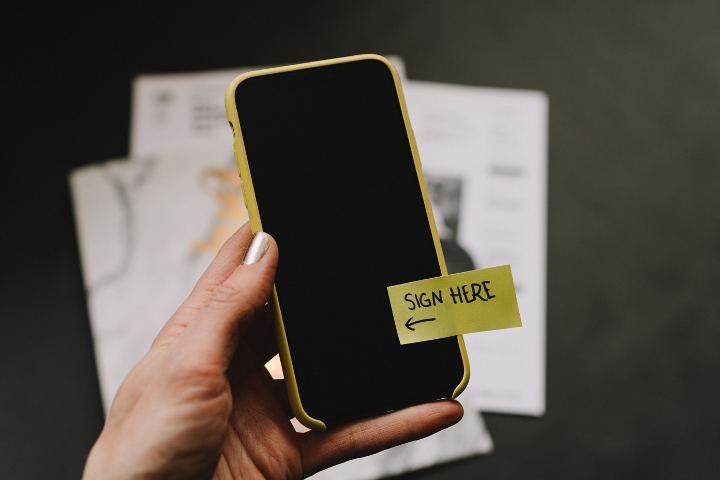
In this digital age, it would be unimaginable for a bank to work without some applications integrated. The financial industry has undergone a technological shift within a few years. Almost a third of people in the world use some form of mobile banking application. The trend has shifted from visiting branches and using desktop internet banking systems to mobile-driven banking.
Mobile banking development has helped streamline internal operations and processes to a user-centric platform. Unlike internet banking, where customers access their accounts through a corporate website, a mobile banking app is a different software tailored for personal devices like smartphones. As such, developing a secure and user-friends mobile banking app is now one of the most critical long-term success factors for banks.
So, the big question is: Does your financial institutions have mobile applications for your customers or employees? Well, if the answer is no, then this post will guide you on the essential rules to take into account when developing fintech apps.
1. Make It Secure
Security is key to sensitive areas such as finance. Sure, security tends to be common sense in mobile banking app development. But we can't stress enough the importance of having a secure app, especially when millions are at stake. If you are not directly involved in the app development process, then your developer partner must emphasize the need for security both in the coding practices and the code itself.
While security is a multidimensional issue, the best practices in mobile banking app development include the following:
- Using SSL for interaction between the servers and the banking app.
- Minimizing local storage of confidential data on users' devices.
- Incorporating automatic log out after a short period of inactivity.
- Including voice-over and biometric identification features.
- Obfuscating the mobile banking app's code to cut off unauthorized access during the development.
- Make the app not functional on jailbroken devices.
Forward-looking banks value their reputation, so client software and IT systems should use security protocols that guarantee the privacy and protection of users' data.
2. Understand Your User
A sensitive banker will want to understand what their clients are trying to achieve. This way, you can get rid of the barriers that will prevent them from achieving those goals. Understanding your users enables you to develop the right mobile solution for banking that is centered on their needs.
Customers often appreciate a brand that prioritizes user experience. Trying to copy your competitor will definitely get you a functional app, but it won't be personalized to your market. Suppose your users' demographics are different from those of your competitors. Most probably, your users expect a different user experience than what they get elsewhere.
To personalize the experience, gather that crucial information about their preferences. If you already have a beta app running, monitor how your current users are interacting with the app. Better yet, reach out to them with a well-crafted survey. In most cases, it is best practice to get the views of your customers before building your mobile banking app.
Perhaps you might want to take personalization to a higher level by incorporating features that enable your users to customize to their preferences. For instance, make it easier to change fonts and colors, including customizable home screens, or even including location features.
Also, try to incorporate a consistent design trend. In most cases, users tend to pick on your unique behavioral trend the more they engage with the app. So, try to keep a consistent trend throughout the app for the users to navigate screens with ease.
3. Keep It Simple: Create a Friendly User Experience
Tied to the above, your mobile app should enable customers to solve their problems in the simplest way. It would be difficult for them to focus on the task at hand if they are bombarded with several options on a small screen. Cut down on the clutter to a few, or even one, action per screen. Provide sufficient space for your icons, targets, and buttons. The ideal size for a finger app is about 44 x 44. Spacing your clickables ensures that your mobile app users won't accidentally click on an item they didn't intend to.
Also, make it simple for them to navigate from one screen or step to the next. If you are targeting an experience where users have to complete multiple steps, be sure to give them a glimpse of what is coming next. Your icons should show them where they are and where they are heading. Otherwise, users will feel lost. Besides this, keep your terminologies understandable by an average user.
4. Make It Mobile Friendly: Light and Fast
Many things are fighting for your users' attention. So, because of the rapidly decreasing user attention span, it is no longer acceptable for apps to take a minute to load. So, how can you develop an app that meets acceptable response time?
First, you need to understand that a mobile app shouldn't be treated the same as your website. To cut down on traffic consumption, take a minimalistic approach. On top of this, minimize the functionality of the app. Your mobile banking app should achieve these four things:
- Simplify transactions.
- Check account balances.
- Deposit a check.
- Enable users to communicate with customer service.
With that said, you have to understand your unique situation. Some of your banking clients might need other banking features included in the app. In such cases, you can build those functionalities in a separate software and link to the app. The key issue is to make your app as light as possible.
5. Provide Support
If you understand your customers and provide what they need in the design stage, they will less likely have issues with the app. However, even if you have the most user-friendly banking app on the planet, there will be moments where some users are challenged by the app. In some cases, your app might be the primary tool of communication with your clients. Considering these two scenarios, your mobile banking app development should incorporate customer support options into the app.
Final Word
As you can see from the above essential rules, mobile banking app development narrows down to offering a seamless user experience and protecting your customer. But make no mistake. Mobile banking app development will take time and often an expensive process. If you get it right by sticking to the above essential rules, then you are on your way to giving your customers their favorite fintech app.








